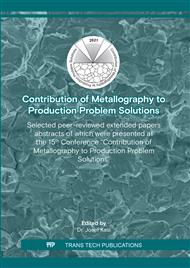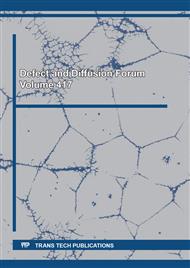p.67
p.73
p.81
p.87
p.95
p.101
p.111
p.117
p.123
Analysis of Defects Associated with Manufacturing Keys for Brass Musical Instruments
Abstract:
This article deals with the problematics of the production of small castings using gravitational investment casting. These are castings with a relatively complex shape, which are used as parts of trigger assembly for musical wind instruments. During their production, various defects occur which are connected with the casting process. The aim of this article is to describe the defects and suggest possible methods for removing them. The first step was to find and identify these defects using metallographic and EDX microanalysis. Furthermore, a simulation calculation of the casting process was used to determine the influence of the casting geometry on casting quality. Based on these analyses, the most suitable alloy and casting system geometry were proposed for the production of the casting.
Info:
Periodical:
Pages:
95-100
Citation:
Online since:
June 2022
Authors:
Price:
Сopyright:
© 2022 Trans Tech Publications Ltd. All Rights Reserved
Share:
Citation:



